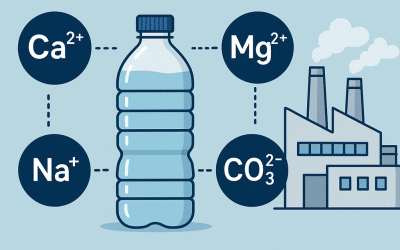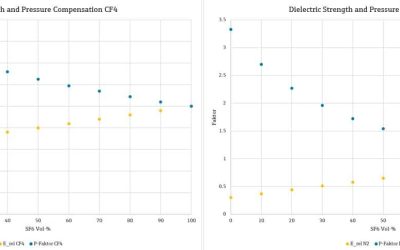Winkle of Knowledge: Concentration measurement protein
This knowledge wink is dedicated to measuring the concentration of protein in water using the physical parameters of density and viscosity. Commercially available whey protein was used as an example, the concentration of which we were able to determine in the range of ±0.07 %w using a VLO-M2. Our shake is now perfect, and we are also happy to help you optimize your protein solutions!
Why this test?
Have you ever wondered why the gains don’t materialise despite hard training in the gym? Have you ever suspected the protein shake? Who knows how much protein is really in there, especially if you don’t meticulously weigh everything… With a VLO-M2 density and viscosity sensor, we set out in search of answers. In the spirit of ‘Dry January’, this wink of knowledge is not dedicated to alcoholic drinks for once, but to whey protein.
But quite apart from the fun factor involved in mixing, measuring and drinking protein shakes: Aqueous protein solutions are not only used in the production of whey products, e.g. for the fitness industry, but are also important pillars of the modern biotech and pharmaceutical industries. Whey protein is a cost-effective way to enter the diverse world of proteins.
What is a Wink of Knowledge?
Do you need to quickly measure, draw or do/build something? The speed with which the result may be achieved counts more than the perfect (scientific) approach. For this reason, we have introduced the Wink of Knowledge. Science in the wink of an eye, so to speak. We don’t want to prove anything scientifically. We simply want to quickly demonstrate something pragmatically. If you are interested, we would be happy to discuss these results in more detail with you and your project.
Results
Mixtures with different concentrations of commercially available whey protein isolate in water were prepared using a balance. The concentrations were chosen to cover the range close to the manufacturer’s recommendation. The recommendation is to dissolve 25g of powder (which corresponds to approx. 3 level tablespoons) in 300 ml of water. Assuming a density of approx. 1kg/l for water, this corresponds to a concentration of approx. 8.3 %w. Our mixtures ranged accordingly from 4.5 %w to 12.5 %w. The density and viscosity of these mixtures were measured with a VLO-M2 at ambient conditions (approx. 24°C, atmospheric pressure) and yielded the following concentration dependencies (blue dots):

Conclusion
Mixtures of whey protein and water in the range of 4.5 %w to 12.5 %w were measured for density and viscosity, and a clear concentration dependence was found. Assuming a linear fit for the density data, we would expect a concentration measurement with approx. ±0.07 %w accuracy for the VLO-M2. It would be interesting to measure other proteins that are found in relevant concentrations in the medical or pharmaceutical sector, for example.
In addition, we were able to optimize our protein shake recipe by using, measuring and comparing the preparation recommendation: TrueDyne Sensors AG now recommends increasing the dose by 50% to 4.5 tablespoons of protein powder per 300 ml of water when using the non-calibrated measuring device “tablespoon from the TrueDyne drawer”.
Which sensors were used?
viscosity sensor VLO-M2
- Click here to learn more about our sensor
Sensors that might interest you
Gases
Viscosity
Applications that might interest you

From volume (l)
to mass (kg)
More Winks of Knowledge that might interest you
Wink of Knowledge: Mineral content of water
Wink of Knowledge: Mineral content of water The mineral content of water plays a key role — both in terms of beverage quality and industrial processes. While it often causes problems such as calcification or corrosion in industry, it promotes health and influences...
Wink of Knowledge: Measuring the density and viscosity of ink in industrial processes
Wink of Knowledge: Measuring the density and viscosity of ink in industrial processesDensity and viscosity measurements of ink for inkjet printers using the VLO-M2 viscosity sensor show a high degree of consistency with control measurements in laboratory analyzers...
Wink of Knowledge: Concentration measurement of SF₆ in insulation gas mixtures for power transformers
Wink of Knowledge: Concentration measurement of SF₆ in insulation gas mixtures for power transformersWhat is a Wink of Knowledge? Do you need to quickly measure, draw or do/build something? The speed with which the result may be achieved counts more than the perfect...
Wink of Knowledge: Viscosity measurement via differential pressure and flow rate
Wink of Knowledge: Viscosity measurement by differential pressure and flow rate This knowledge wink deals with the viscosity determination of media above the measuring range of the dedicated viscosity sensor VLO-M2. Various media were measured in a wide temperature...
Wink of Knowledge: Improved methanol/water concentration model for fuel cells
A new concentration model for methanol / water mixtures is shown. The model covers a wide range of process conditions: At temperatures of 0-80°C, concentrations of 0-100% can be calculated from the density with an accuracy of ± 0.2%. The direct methanol fuel cell (DMFC) is an important application for this as the power source of the future.
Wink of Knowledge: smart mass flow controller
Discover the future of precise gas flow control with the innovative Smart Mass Flow Controller from TrueDyne Sensors AG. In cooperation with IST AG, we have developed a pioneering device capable of measuring density, temperature, pressure and mass flow – all in one sensor. Designed for flexibility and accuracy, this controller automatically adapts to different pure gases and binary gas mixtures, ensuring optimal performance. Learn more about this groundbreaking solution at TrueDyne Sensors AG.










